Discover how large-cap stocks are distributed across the 11 key market sectors and what that means for your portfolio strategy.
Introduction: How Sector Classification Shapes Large-Cap Investing
Large-cap stocks—typically defined as companies with a market capitalization exceeding $10 billion—form the backbone of the equity market. These firms are often industry leaders with global operations, strong balance sheets, and consistent earnings, making them a cornerstone in institutional and retail portfolios alike. To better understand how these companies influence market dynamics, investors rely on the Global Industry Classification Standard (GICS), a framework developed by MSCI and S&P Dow Jones Indices. GICS organizes publicly traded companies into 11 primary sectors, enabling investors to analyze performance, manage risk, and construct diversified portfolios with greater precision.
Sector representation within large-cap indices like the S&P 500 is not evenly distributed—technology, healthcare, and financials dominate, while sectors like utilities and materials hold smaller weights. This imbalance can significantly impact portfolio behavior, especially during economic shifts. In this article, we’ll explore each of the 11 GICS sectors, examine how large-cap stocks are distributed across them, and highlight how sector weightings have evolved over time. We’ll also discuss the implications for portfolio construction and offer practical strategies for managing sector exposure in a changing market landscape.
Want expert insights from leading investment podcasts? Scroll to the end to the Podcast Transcripts📜
The 11 GICS Sectors Explained: Foundations of Market Diversification
These sectors include Information Technology, which covers software, semiconductors, and hardware companies like Microsoft MSFT; Healthcare, which includes pharmaceuticals and medical devices such as Johnson & Johnson JNJ; and Financials, encompassing banks and insurance firms like JPMorgan Chase JPM. Consumer Discretionary features companies offering non-essential goods and services, such as Amazon AMZN, while Communication Services includes media, telecom, and digital platforms like Alphabet GOOGL.
Industrials represent transportation, construction, and machinery firms like Boeing BA, while Consumer Staples include essential goods producers such as Procter & Gamble PG. The Energy sector covers oil and gas giants like Chevron CVX, and Utilities consist of regulated electricity and water providers. Materials include companies involved in mining, chemicals, and packaging, while Real Estate features REITs and property developers.
In The Investor’s Podcast Network, analysts explained, “Sector classification helps investors isolate performance drivers and manage risk” (🎧 08:40). Meanwhile, Morningstar’s Investing Insights emphasized, “GICS sectors are the building blocks of modern portfolio construction” (🎧 10:25). These insights reinforce how understanding sector definitions enables investors to align their strategies with economic trends and market cycles.

Sources:
Corporate Finance Institute – The S&P Sectors
MSCI – GICS Methodology
Charles Schwab – What Are Stock Sectors?
The Investor’s Podcast Network
Morningstar’s Investing Insights
StockBossUp – Sector Representation in Large-Cap Stocks
Yahoo Finance – Sector Performance
ETF.com – Sector Exposure in Large-Cap ETFs
FTSE Russell – Russell 1000 Index Methodology
SoFi – S&P 500 Sector Weights
Advisor Channel – S&P 500 Sectors and Industries
World P/E Ratio – Sector P/E and Valuation
CGAA – Publicly Traded Companies by Sector
Sector Weightings in Large-Cap Indices: What Investors Need to Know
In large-cap indices like the S&P 500 and Russell 1000, sector weightings are determined by market capitalization, meaning the largest companies exert the most influence. As of the latest data, the technology sector dominates both indices, accounting for approximately 26% of total weight. This is largely due to mega-cap firms such as Apple AAPL, Microsoft MSFT, and Nvidia NVDA.
Healthcare follows at around 14.5%, with major players like Johnson & Johnson JNJ and UnitedHealth Group UNH. Financials round out the top three at roughly 12.9%, led by JPMorgan Chase JPM and Bank of America BAC. Cyclical sectors like consumer discretionary, industrials, and energy tend to perform well during economic expansions, while defensive sectors such as healthcare, utilities, and consumer staples offer stability during downturns.
In The Investor’s Podcast Network, analysts discussed how market-cap weighting can skew index exposure, noting that “a handful of companies can disproportionately drive returns” (🎧 09:10). They also explored how this concentration risk affects passive investors who rely on index funds. Meanwhile, Morningstar’s Investing Insights emphasized, “Sector dominance reflects investor sentiment and macroeconomic cycles” (🎧 11:05), highlighting the importance of understanding sector drift over time.
Sources:
Thoughtful Finance – Russell 1000 vs. S&P 500
Investopedia – S&P 500 vs. Russell 1000
The Chart Report – Breaking Down the Russell Indices
The Investor’s Podcast Network
Morningstar’s Investing Insights
StockBossUp – Sector Representation in Large-Cap Stocks
Yahoo Finance – Sector Performance
ETF.com – Sector Exposure in Large-Cap ETFs
FTSE Russell – Russell 1000 Index Methodology
SoFi – S&P 500 Sector Weights
Advisor Channel – S&P 500 Sectors and Industries
World P/E Ratio – Sector P/E and Valuation
CGAA – Publicly Traded Companies by Sector
Breaking Down the 11 Sectors Driving Large-Cap Market Performance
The S&P 500’s sector composition reveals how large-cap companies shape the broader market. Information Technology leads with a 26% weight, driven by innovation giants like Apple AAPL, Microsoft MSFT, and Nvidia NVDA. These firms power everything from cloud computing to AI infrastructure. Healthcare follows at 14.5%, anchored by Johnson & Johnson JNJ and UnitedHealth Group UNH, offering stability through pharmaceuticals and insurance services. Financials, at 12.9%, include JPMorgan Chase JPM and Bank of America BAC, which drive capital markets and consumer lending.
Consumer Discretionary, at 10.6%, features Amazon AMZN and Tesla TSLA, both of which thrive on consumer demand and innovation. Communication Services, at 8.8%, includes Alphabet GOOGL and Meta Platforms META, shaping digital advertising and social media. Industrials, at 8.5%, are represented by Boeing BA and Union Pacific UNP, essential to aerospace and freight logistics. Consumer Staples, at 6.5%, include Procter & Gamble PG and Coca-Cola KO, offering recession-resistant products.
In The Investor’s Podcast Network, analysts noted, “Sector weightings evolve with innovation and capital flows” (🎧 13:10), emphasizing how tech and healthcare have gained dominance. Meanwhile, Morningstar’s Investing Insights highlighted, “Understanding sector shifts helps investors anticipate market leadership” (🎧 14:55), pointing to the cyclical nature of energy and industrials.
Energy, at 4.1%, includes ExxonMobil XOM and Chevron CVX, while Utilities (2.5%) and Real Estate (2.4%) offer income and inflation hedges through companies like NextEra Energy NEE, Duke Energy DUK, American Tower AMT, and Prologis PLD. Materials, at 2.6%, include Dow Inc. DOW and Newmont Corporation NEM, supporting industrial supply chains and commodity markets.
Sources:
Corporate Finance Institute – The S&P Sectors
SoFi – S&P 500 Sector Weights
World P/E Ratio – Sector P/E and Valuation
The Investor’s Podcast Network
Morningstar’s Investing Insights
StockBossUp – Sector Representation in Large-Cap Stocks
Yahoo Finance – Sector Performance
ETF.com – Sector Exposure in Large-Cap ETFs
FTSE Russell – Russell 1000 Index Methodology
Advisor Channel – S&P 500 Sectors and Industries
CGAA – Publicly Traded Companies by Sector
How Sector Representation Shapes Portfolio Risk and Return
Sector representation plays a pivotal role in portfolio construction, directly influencing diversification and volatility. When a portfolio is heavily concentrated in one sector—such as technology—it becomes more susceptible to sector-specific downturns. For instance, a correction in tech stocks can significantly impact portfolios that are overexposed to companies like Apple AAPL or Nvidia NVDA, even if the broader market remains stable.
Diversification across multiple sectors helps mitigate this risk, ensuring that losses in one area may be offset by gains in another. Investors often assume that ETFs and index funds offer built-in diversification, but many are unaware of the sector weightings embedded within these products.
In The Investor’s Podcast Network, analysts noted, “Sector concentration can quietly erode diversification if left unchecked” (🎧 09:10), emphasizing the need for regular portfolio reviews. Meanwhile, Morningstar’s Investing Insights highlighted, “Even broad index funds can carry hidden sector biases” (🎧 10:55), urging investors to look beyond fund names and examine actual holdings. These insights underscore how macroeconomic trends—like rising interest rates or shifts in consumer demand—can alter sector performance and portfolio outcomes.
Sources:
SSGA – Sector Investing: A Powerful Portfolio Construction Tool
ChartMill – How to Diversify Your Portfolio Using Sector-Based Allocation
The Investor’s Podcast Network
Morningstar’s Investing Insights
StockBossUp – Sector Representation in Large-Cap Stocks
Yahoo Finance – Sector Performance
ETF.com – Sector Exposure in Large-Cap ETFs
FTSE Russell – Russell 1000 Index Methodology
SoFi – S&P 500 Sector Weights
Advisor Channel – S&P 500 Sectors and Industries
World P/E Ratio – Sector P/E and Valuation
CGAA – Publicly Traded Companies by Sector
Top Tools for Sector Diversification and Smarter Portfolio Allocation
One of the most effective tools for achieving this is through sector ETFs, which allow investors to gain targeted exposure to specific industries without picking individual stocks. For example, the Technology Select Sector SPDR Fund (XLK) offers access to tech giants like Microsoft MSFT and Apple AAPL, while the Health Care Select Sector SPDR Fund (XLV) focuses on companies like Johnson & Johnson JNJ. Equal-weighted indices, such as the Invesco S&P 500 Equal Weight ETF (RSP), provide a more balanced approach by giving each constituent the same weight, reducing the dominance of mega-cap stocks.
In Morningstar’s Investing Insights, analysts emphasized, “Equal-weighted strategies help mitigate overexposure to top-heavy sectors” (🎧 07:45), especially during periods of sector rotation. Meanwhile, The Investor’s Podcast Network discussed how “sector ETFs offer tactical flexibility without sacrificing diversification” (🎧 12:30), highlighting their role in adapting to macroeconomic shifts. These insights underscore the importance of using diversified tools to align with changing market dynamics.
Sources:
Morningstar – 3 ETFs to Diversify Your Portfolio
Morningstar – The Pros and Cons of Equal-Weighted ETFs
ETF Database – When Diversification Matters, Think Equal Weighting
The Investor’s Podcast Network
Morningstar’s Investing Insights
StockBossUp – Sector Representation in Large-Cap Stocks
Yahoo Finance – Sector Performance
FTSE Russell – Russell 1000 Index Methodology
SoFi – S&P 500 Sector Weights
Advisor Channel – S&P 500 Sectors and Industries
World P/E Ratio – Sector P/E and Valuation
CGAA – Publicly Traded Companies by Sector
Conclusion
Sector representation in large-cap stocks is more than a structural detail—it’s a strategic lens through which investors can interpret market behavior, manage risk, and optimize returns. By understanding how sectors like technology, healthcare, and financials dominate indices such as the S&P 500, investors can better assess concentration risks and identify diversification opportunities. Tools like sector ETFs, equal-weighted indices, and platforms such as StockBossUp and Morningstar empower investors to analyze and rebalance their portfolios in response to economic shifts and sector drift.
Whether you're navigating a bull market or preparing for a downturn, aligning sector exposure with macroeconomic trends and personal investment goals is key to building a resilient, forward-looking portfolio. This sector-by-sector breakdown offers a roadmap for making smarter, data-driven decisions in today’s dynamic market landscape.
Podcast Transcripts 🎙️
Motley Fool Money – Dividend Stocks for a Volatile Market
This episode explores how dividend-paying companies can provide stability during uncertain market conditions. The hosts discuss sectors like consumer staples and utilities, and highlight companies with strong balance sheets and consistent payout histories.
“Dividends are the ballast in your portfolio” (🎧 12:45)
We Study Billionaires – How Billionaires Use Dividends
This episode dives into how legendary investors like Warren Buffett and Charlie Munger leverage dividend-paying stocks for long-term wealth building.
“Steady growth from broad market exposure anchors long-term wealth” (🎧 10:15)
“Dividend reinvestment compounds returns over decades” (🎧 16:20)
Morningstar’s Investing Insights – Dividend Investing in 2025
Analysts discuss undervalued sectors like healthcare and energy, and how dividend growth stocks are positioned for the year ahead.
“Low fees and market efficiency are key to building wealth” (🎧 12:30)
“Diversification supports sustainable income” (🎧 14:20)
Dividend Talk – From Dividend Cuts to Recovery
The hosts examine companies that have cut dividends and their paths to recovery, including Shell, General Electric, and 3M.
“When a dividend seems too high, it’s a cue to investigate further” (🎧 11:36)
“Dividend cuts can lead to long-term resilience” (🎧 27:50)
The Long View – How to Build a Dividend Portfolio
This episode offers a deep dive into constructing a dividend-focused portfolio, balancing yield with growth, and avoiding overconcentration.
“A diversified dividend portfolio shields against market shocks” (🎧 13:55)
“Align dividend strategies with long-term wealth goals” (🎧 21:18)
The Meb Faber Show – Avoiding Dividend Traps
Meb Faber discusses the hidden risks of high-yield dividend stocks, especially in taxable accounts, and advocates for a total return approach.
“A blind allegiance to dividends could be a very, very bad idea” (🎧 09:10)
“Stripping out top dividend payers can improve after-tax returns” (🎧 12:40)
📌Read More About:
Top Large Cap Stocks https://stockbossup.com/pages/topics/large-cap
What Are Large US Cap Stocks?- https://stockbossup.com/pages/post/39168/what-are-large-cap-stocks-a-complete-guide-to-big-companies-in-the-u-s-market
Large Cap Sector Breakdown: How Each Industry Shapes the Market- https://stockbossup.com/pages/post/39242/large-cap-sector-breakdown-how-each-industry-shapes-the-market
What Are the Largest Market Cap Sectors?- https://stockbossup.com/pages/post/39159/largest-market-cap-sectors-key-industries-driving-global-investment
Which Industry Has the Highest Market Cap?- https://stockbossup.com/pages/post/39160/industries-with-the-highest-market-capitalization-key-sectors-driving-global-investment
🌐Global & Industrial Picks:
Is Microsoft a Mega-Cap Stock?- https://www.stockbossup.com/pages/post/38850/is-microsoft-considered-a-mega-cap-stock
Is Apple a Mega-Cap?- https://stockbossup.com/pages/post/39186/is-apple-a-mega-cap-stock-understanding-its-market-influence
Is Amazon a Mega-Cap?- https://stockbossup.com/pages/post/39191/is-amazon-a-mega-cap-stock-evaluating-its-market-influence
Procter & Gamble Stock: Accurately Valued or Overpriced in 2025?- https://www.stockbossup.com/pages/post/38536/procter-gamble-stock-accurately-valued-or-overpriced-in-2025
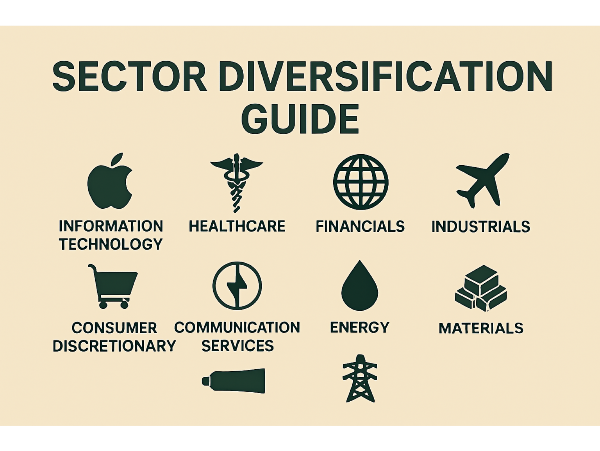

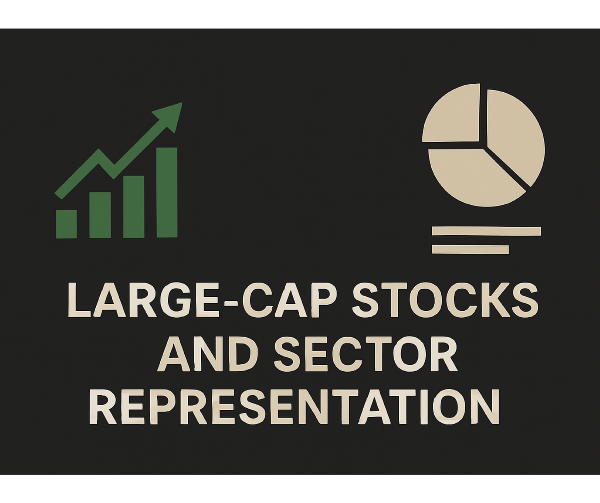
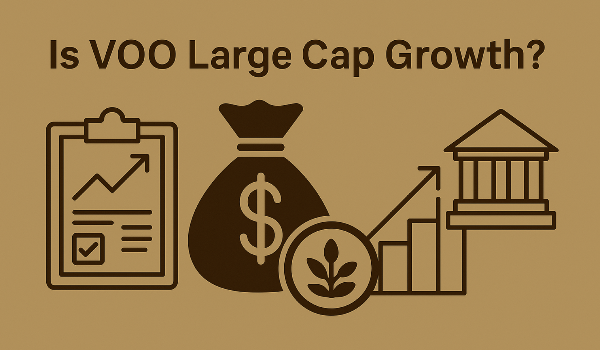
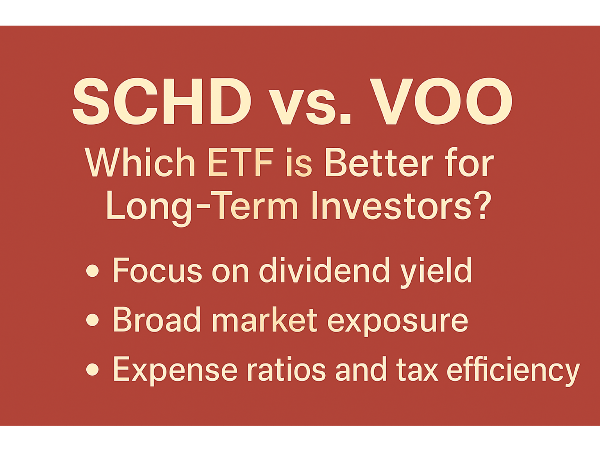







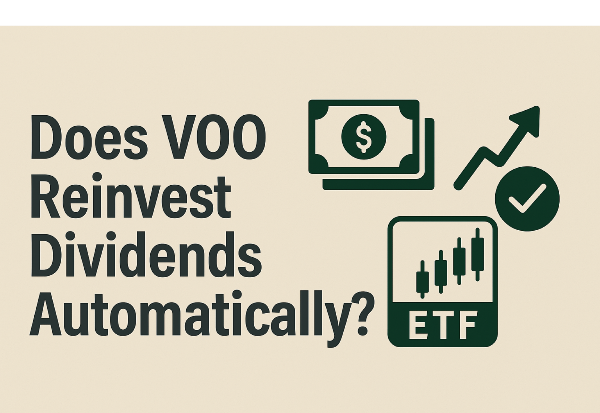
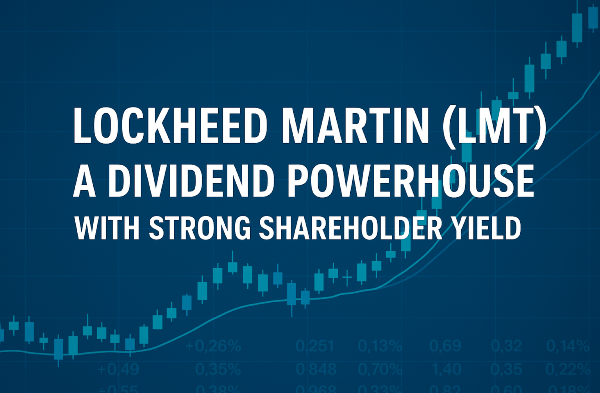
















Discover how large-cap stocks are distributed across the 11 key market sectors and what that means for your portfolio strategy.
Introduction: How Sector Classification Shapes Large-Cap Investing
Large-cap stocks—typically defined as companies with a market capitalization exceeding $10 billion—form the backbone of the equity market. These firms are often industry leaders with global operations, strong balance sheets, and consistent earnings, making them a cornerstone in institutional and retail portfolios alike. To better understand how these companies influence market dynamics, investors rely on the Global Industry Classification Standard (GICS), a framework developed by MSCI and S&P Dow Jones Indices. GICS organizes publicly traded companies into 11 primary sectors, enabling investors to analyze performance, manage risk, and construct diversified portfolios with greater precision.
Sector representation within large-cap indices like the S&P 500 is not evenly distributed—technology, healthcare, and financials dominate, while sectors like utilities and materials hold smaller weights. This imbalance can significantly impact portfolio behavior, especially during economic shifts. In this article, we’ll explore each of the 11 GICS sectors, examine how large-cap stocks are distributed across them, and highlight how sector weightings have evolved over time. We’ll also discuss the implications for portfolio construction and offer practical strategies for managing sector exposure in a changing market landscape.
Want expert insights from leading investment podcasts? Scroll to the end to the Podcast Transcripts📜
The 11 GICS Sectors Explained: Foundations of Market Diversification
These sectors include Information Technology, which covers software, semiconductors, and hardware companies like Microsoft MSFT; Healthcare, which includes pharmaceuticals and medical devices such as Johnson & Johnson JNJ; and Financials, encompassing banks and insurance firms like JPMorgan Chase JPM. Consumer Discretionary features companies offering non-essential goods and services, such as Amazon AMZN, while Communication Services includes media, telecom, and digital platforms like Alphabet GOOGL.
Industrials represent transportation, construction, and machinery firms like Boeing BA, while Consumer Staples include essential goods producers such as Procter & Gamble PG. The Energy sector covers oil and gas giants like Chevron CVX, and Utilities consist of regulated electricity and water providers. Materials include companies involved in mining, chemicals, and packaging, while Real Estate features REITs and property developers.
In The Investor’s Podcast Network, analysts explained, “Sector classification helps investors isolate performance drivers and manage risk” (🎧 08:40). Meanwhile, Morningstar’s Investing Insights emphasized, “GICS sectors are the building blocks of modern portfolio construction” (🎧 10:25). These insights reinforce how understanding sector definitions enables investors to align their strategies with economic trends and market cycles.
Sources:
Corporate Finance Institute – The S&P Sectors
MSCI – GICS Methodology
Charles Schwab – What Are Stock Sectors?
The Investor’s Podcast Network
Morningstar’s Investing Insights
StockBossUp – Sector Representation in Large-Cap Stocks
Yahoo Finance – Sector Performance
ETF.com – Sector Exposure in Large-Cap ETFs FTSE Russell – Russell 1000 Index Methodology
SoFi – S&P 500 Sector Weights
Advisor Channel – S&P 500 Sectors and Industries
World P/E Ratio – Sector P/E and Valuation
CGAA – Publicly Traded Companies by Sector
Sector Weightings in Large-Cap Indices: What Investors Need to Know
In large-cap indices like the S&P 500 and Russell 1000, sector weightings are determined by market capitalization, meaning the largest companies exert the most influence. As of the latest data, the technology sector dominates both indices, accounting for approximately 26% of total weight. This is largely due to mega-cap firms such as Apple AAPL, Microsoft MSFT, and Nvidia NVDA.
Healthcare follows at around 14.5%, with major players like Johnson & Johnson JNJ and UnitedHealth Group UNH. Financials round out the top three at roughly 12.9%, led by JPMorgan Chase JPM and Bank of America BAC. Cyclical sectors like consumer discretionary, industrials, and energy tend to perform well during economic expansions, while defensive sectors such as healthcare, utilities, and consumer staples offer stability during downturns.
In The Investor’s Podcast Network, analysts discussed how market-cap weighting can skew index exposure, noting that “a handful of companies can disproportionately drive returns” (🎧 09:10). They also explored how this concentration risk affects passive investors who rely on index funds. Meanwhile, Morningstar’s Investing Insights emphasized, “Sector dominance reflects investor sentiment and macroeconomic cycles” (🎧 11:05), highlighting the importance of understanding sector drift over time.
Sources:
Thoughtful Finance – Russell 1000 vs. S&P 500
Investopedia – S&P 500 vs. Russell 1000
The Chart Report – Breaking Down the Russell Indices
The Investor’s Podcast Network
Morningstar’s Investing Insights
StockBossUp – Sector Representation in Large-Cap Stocks
Yahoo Finance – Sector Performance
ETF.com – Sector Exposure in Large-Cap ETFs FTSE Russell – Russell 1000 Index Methodology
SoFi – S&P 500 Sector Weights
Advisor Channel – S&P 500 Sectors and Industries
World P/E Ratio – Sector P/E and Valuation
CGAA – Publicly Traded Companies by Sector
Breaking Down the 11 Sectors Driving Large-Cap Market Performance
The S&P 500’s sector composition reveals how large-cap companies shape the broader market. Information Technology leads with a 26% weight, driven by innovation giants like Apple AAPL, Microsoft MSFT, and Nvidia NVDA. These firms power everything from cloud computing to AI infrastructure. Healthcare follows at 14.5%, anchored by Johnson & Johnson JNJ and UnitedHealth Group UNH, offering stability through pharmaceuticals and insurance services. Financials, at 12.9%, include JPMorgan Chase JPM and Bank of America BAC, which drive capital markets and consumer lending.
Consumer Discretionary, at 10.6%, features Amazon AMZN and Tesla TSLA, both of which thrive on consumer demand and innovation. Communication Services, at 8.8%, includes Alphabet GOOGL and Meta Platforms META, shaping digital advertising and social media. Industrials, at 8.5%, are represented by Boeing BA and Union Pacific UNP, essential to aerospace and freight logistics. Consumer Staples, at 6.5%, include Procter & Gamble PG and Coca-Cola KO, offering recession-resistant products.
In The Investor’s Podcast Network, analysts noted, “Sector weightings evolve with innovation and capital flows” (🎧 13:10), emphasizing how tech and healthcare have gained dominance. Meanwhile, Morningstar’s Investing Insights highlighted, “Understanding sector shifts helps investors anticipate market leadership” (🎧 14:55), pointing to the cyclical nature of energy and industrials.
Energy, at 4.1%, includes ExxonMobil XOM and Chevron CVX, while Utilities (2.5%) and Real Estate (2.4%) offer income and inflation hedges through companies like NextEra Energy NEE, Duke Energy DUK, American Tower AMT, and Prologis PLD. Materials, at 2.6%, include Dow Inc. DOW and Newmont Corporation NEM, supporting industrial supply chains and commodity markets.
Sources:
Corporate Finance Institute – The S&P Sectors
SoFi – S&P 500 Sector Weights
World P/E Ratio – Sector P/E and Valuation
The Investor’s Podcast Network
Morningstar’s Investing Insights
StockBossUp – Sector Representation in Large-Cap Stocks
Yahoo Finance – Sector Performance
ETF.com – Sector Exposure in Large-Cap ETFs FTSE Russell – Russell 1000 Index Methodology
Advisor Channel – S&P 500 Sectors and Industries
CGAA – Publicly Traded Companies by Sector
How Sector Representation Shapes Portfolio Risk and Return
Sector representation plays a pivotal role in portfolio construction, directly influencing diversification and volatility. When a portfolio is heavily concentrated in one sector—such as technology—it becomes more susceptible to sector-specific downturns. For instance, a correction in tech stocks can significantly impact portfolios that are overexposed to companies like Apple AAPL or Nvidia NVDA, even if the broader market remains stable.
Diversification across multiple sectors helps mitigate this risk, ensuring that losses in one area may be offset by gains in another. Investors often assume that ETFs and index funds offer built-in diversification, but many are unaware of the sector weightings embedded within these products.
In The Investor’s Podcast Network, analysts noted, “Sector concentration can quietly erode diversification if left unchecked” (🎧 09:10), emphasizing the need for regular portfolio reviews. Meanwhile, Morningstar’s Investing Insights highlighted, “Even broad index funds can carry hidden sector biases” (🎧 10:55), urging investors to look beyond fund names and examine actual holdings. These insights underscore how macroeconomic trends—like rising interest rates or shifts in consumer demand—can alter sector performance and portfolio outcomes.
Sources:
SSGA – Sector Investing: A Powerful Portfolio Construction Tool
ChartMill – How to Diversify Your Portfolio Using Sector-Based Allocation
The Investor’s Podcast Network
Morningstar’s Investing Insights
StockBossUp – Sector Representation in Large-Cap Stocks
Yahoo Finance – Sector Performance
ETF.com – Sector Exposure in Large-Cap ETFs FTSE Russell – Russell 1000 Index Methodology
SoFi – S&P 500 Sector Weights
Advisor Channel – S&P 500 Sectors and Industries
World P/E Ratio – Sector P/E and Valuation
CGAA – Publicly Traded Companies by Sector
Top Tools for Sector Diversification and Smarter Portfolio Allocation
One of the most effective tools for achieving this is through sector ETFs, which allow investors to gain targeted exposure to specific industries without picking individual stocks. For example, the Technology Select Sector SPDR Fund (XLK) offers access to tech giants like Microsoft MSFT and Apple AAPL, while the Health Care Select Sector SPDR Fund (XLV) focuses on companies like Johnson & Johnson JNJ. Equal-weighted indices, such as the Invesco S&P 500 Equal Weight ETF (RSP), provide a more balanced approach by giving each constituent the same weight, reducing the dominance of mega-cap stocks.
In Morningstar’s Investing Insights, analysts emphasized, “Equal-weighted strategies help mitigate overexposure to top-heavy sectors” (🎧 07:45), especially during periods of sector rotation. Meanwhile, The Investor’s Podcast Network discussed how “sector ETFs offer tactical flexibility without sacrificing diversification” (🎧 12:30), highlighting their role in adapting to macroeconomic shifts. These insights underscore the importance of using diversified tools to align with changing market dynamics.
Sources:
Morningstar – 3 ETFs to Diversify Your Portfolio
Morningstar – The Pros and Cons of Equal-Weighted ETFs
ETF Database – When Diversification Matters, Think Equal Weighting
The Investor’s Podcast Network
Morningstar’s Investing Insights
StockBossUp – Sector Representation in Large-Cap Stocks
Yahoo Finance – Sector Performance
FTSE Russell – Russell 1000 Index Methodology
SoFi – S&P 500 Sector Weights
Advisor Channel – S&P 500 Sectors and Industries
World P/E Ratio – Sector P/E and Valuation
CGAA – Publicly Traded Companies by Sector
Conclusion
Sector representation in large-cap stocks is more than a structural detail—it’s a strategic lens through which investors can interpret market behavior, manage risk, and optimize returns. By understanding how sectors like technology, healthcare, and financials dominate indices such as the S&P 500, investors can better assess concentration risks and identify diversification opportunities. Tools like sector ETFs, equal-weighted indices, and platforms such as StockBossUp and Morningstar empower investors to analyze and rebalance their portfolios in response to economic shifts and sector drift.
Whether you're navigating a bull market or preparing for a downturn, aligning sector exposure with macroeconomic trends and personal investment goals is key to building a resilient, forward-looking portfolio. This sector-by-sector breakdown offers a roadmap for making smarter, data-driven decisions in today’s dynamic market landscape.
Podcast Transcripts 🎙️
Motley Fool Money – Dividend Stocks for a Volatile Market
This episode explores how dividend-paying companies can provide stability during uncertain market conditions. The hosts discuss sectors like consumer staples and utilities, and highlight companies with strong balance sheets and consistent payout histories.
“Dividends are the ballast in your portfolio” (🎧 12:45)
We Study Billionaires – How Billionaires Use Dividends
This episode dives into how legendary investors like Warren Buffett and Charlie Munger leverage dividend-paying stocks for long-term wealth building.
“Steady growth from broad market exposure anchors long-term wealth” (🎧 10:15)
“Dividend reinvestment compounds returns over decades” (🎧 16:20)
Morningstar’s Investing Insights – Dividend Investing in 2025
Analysts discuss undervalued sectors like healthcare and energy, and how dividend growth stocks are positioned for the year ahead.
“Low fees and market efficiency are key to building wealth” (🎧 12:30)
“Diversification supports sustainable income” (🎧 14:20)
Dividend Talk – From Dividend Cuts to Recovery
The hosts examine companies that have cut dividends and their paths to recovery, including Shell, General Electric, and 3M.
“When a dividend seems too high, it’s a cue to investigate further” (🎧 11:36)
“Dividend cuts can lead to long-term resilience” (🎧 27:50)
The Long View – How to Build a Dividend Portfolio
This episode offers a deep dive into constructing a dividend-focused portfolio, balancing yield with growth, and avoiding overconcentration. “A diversified dividend portfolio shields against market shocks” (🎧 13:55)
“Align dividend strategies with long-term wealth goals” (🎧 21:18)
The Meb Faber Show – Avoiding Dividend Traps
Meb Faber discusses the hidden risks of high-yield dividend stocks, especially in taxable accounts, and advocates for a total return approach.
“A blind allegiance to dividends could be a very, very bad idea” (🎧 09:10)
“Stripping out top dividend payers can improve after-tax returns” (🎧 12:40)
📌Read More About:
Top Large Cap Stocks https://stockbossup.com/pages/topics/large-cap
What Are Large US Cap Stocks?- https://stockbossup.com/pages/post/39168/what-are-large-cap-stocks-a-complete-guide-to-big-companies-in-the-u-s-market
Large Cap Sector Breakdown: How Each Industry Shapes the Market- https://stockbossup.com/pages/post/39242/large-cap-sector-breakdown-how-each-industry-shapes-the-market
What Are the Largest Market Cap Sectors?- https://stockbossup.com/pages/post/39159/largest-market-cap-sectors-key-industries-driving-global-investment
Which Industry Has the Highest Market Cap?- https://stockbossup.com/pages/post/39160/industries-with-the-highest-market-capitalization-key-sectors-driving-global-investment
🌐Global & Industrial Picks:
Is Microsoft a Mega-Cap Stock?- https://www.stockbossup.com/pages/post/38850/is-microsoft-considered-a-mega-cap-stock
Is Apple a Mega-Cap?- https://stockbossup.com/pages/post/39186/is-apple-a-mega-cap-stock-understanding-its-market-influence
Is Amazon a Mega-Cap?- https://stockbossup.com/pages/post/39191/is-amazon-a-mega-cap-stock-evaluating-its-market-influence
Procter & Gamble Stock: Accurately Valued or Overpriced in 2025?- https://www.stockbossup.com/pages/post/38536/procter-gamble-stock-accurately-valued-or-overpriced-in-2025